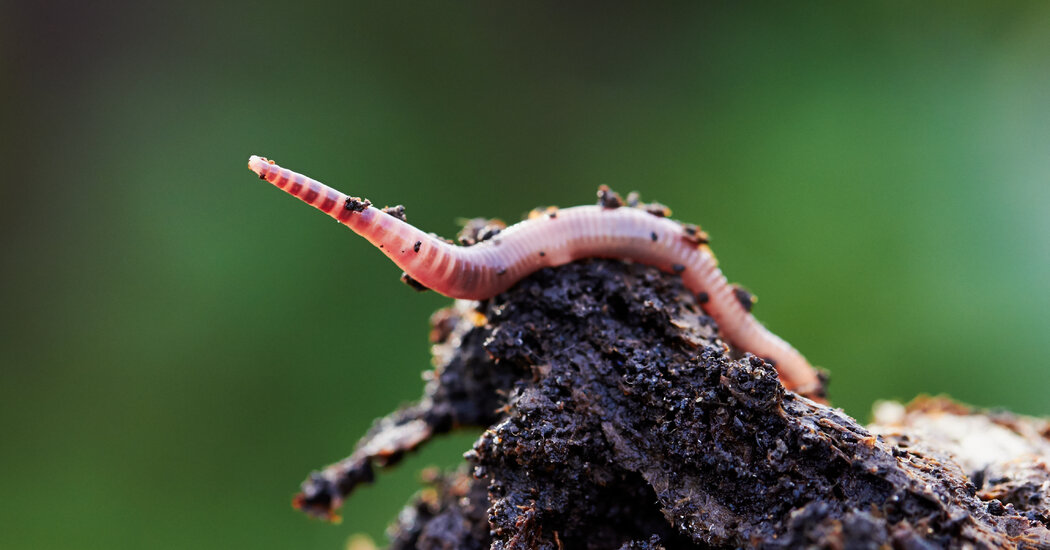Worms are on the move, and people are nervous.
That’s because they’re taking over territory in the Far North that’s been wormless since the last ice age. Scientists say the expansion will inevitably change northern ecosystems, with implications for the whole planet, in ways we don’t fully understand and probably can’t undo.
“We should be cautious about an organism that comes in and is going to be really hard to remove,” said Jonatan Klaminder, a professor of ecology at Umea University in Sweden who studies earthworms. “We should really, really study carefully what the effects of this organism will be.”
In much of the temperate world, shoveling up a clump of ground full of common earthworms is a sign of healthy soil full of flora, fungi and good bacteria. Earthworms actively contribute to soil health by munching on decaying organic matter and pooping out nutrient-rich fertilizer.
But that means worms also have the potential to upend the natural balance of ecosystems in Arctic and sub-Arctic zones. For example, by encouraging the growth of certain plants at the expense of others, altering entire food webs and squeezing out rare, native flora that is already threatened by climate change.
“Earthworms, at least locally, are more potent in changing vegetation than temperature,” Dr. Klaminder said.
They can also trigger microbial activity that can help to unlock potent greenhouse gases like carbon dioxide, methane and nitrogen that are stored in the soil.
Worms didn’t make it to the Far North on their own. Research shows that humans have been bringing them, intentionally and unintentionally, to remote places above the Arctic Circle and to sub-Arctic areas since at least the middle of the 1800s by importing soil for lawns and gardens and for use as fishing bait. Recent increases in travel to these areas can also contribute to the invasion. Worms go where humans go.
Now, as human-caused climate change raises temperatures and thaws the permafrost, the worms are getting a foothold. Only without feet. Once established in the soil, they don’t even need to find a partner of the opposite sex to multiply. Earthworms are hermaphrodites, meaning they have both male and female reproductive organs. So, anyone will do.
Because of changes in the chemistry and physics of the ground, grasses and shrubby plants tend to thrive, taking over from tundra mosses and lichens. That’s good news for the lemmings and voles that favor such plants, according to Hanna Jonsson, an ecology researcher at Umea University. But probably not good for other herbivores that might not adapt easily to a change in available food.
Most importantly, these changes can reduce the amount of snow cover that reflects solar heat back into space from the top of the world. That means the ground can absorb exponentially even more heat.
Something similar happens in temperate and boreal forests in North America, from Indiana to Alberta, where worms are helping grasses and herbs take territory from pines, spruces and larch trees, according to Dylan Craven, a plant ecologist at Universidad Mayor in Santiago, Chile.
That makes for a complicated global picture, and scientists still aren’t sure exactly how these earthworm invasions might affect the planet’s ecosystems and overall greenhouse gas levels.
“You get into a situation where there are so many different impacts that it’s hard to predict the outcome,” said Lee Frelich, director of the Center for Forest Ecology at the University of Minnesota. “The impacts can really vary hugely and it sounds contradictory, but they can literally do opposite things depending on the context.”
Initial research by Dr. Klaminder and Ms. Jonsson suggests that, depending on vegetation type, the overall impact on the planet’s carbon balance could amount to zero or even a net reduction. That’s because any release of carbon dioxide from the decomposition of organic matter caused by worms could be offset by growing plants that can suck up some carbon from the air.
Other experts, including Dr. Frelich and Dr. Craven, say any such virtuous effect on the carbon balance could be canceled out by the decline of tree growth in the forests of North America. And any sort of carbon dioxide sequestration that earthworms could be doing in the long-term would be too little, too late.
“The world has a problem with too much CO2 in the atmosphere right now,” Dr. Frelich said.
What scientists agree on is that the worm-related changes are definitely significant. They’re happening very quickly in a region that’s warming much faster than the rest of the planet and hosts some of the world’s last untouched ecosystems and some of its most vulnerable species of flora and fauna.
The changes are probably irreversible, because earthworms are very difficult to eradicate. And, we’re very likely going to see settlements expanding as the Far North becomes warmer and more hospitable.
“First step from the Arctic perspective is actually getting a good estimate of the scale of the problem,” Dr. Klaminder said. “Because, as I see it now, the Arctic is one of the last pristine areas where human settlements haven’t really spread all across the landscape.”



